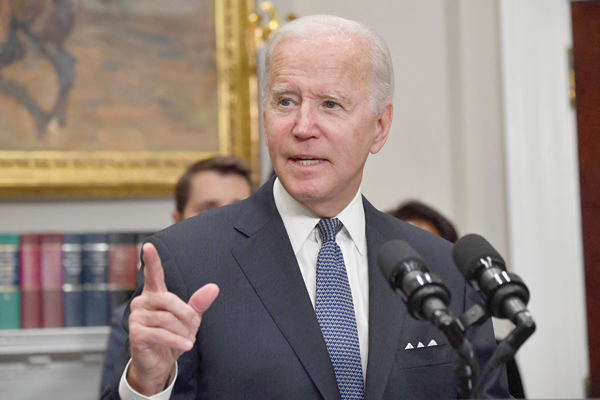You are here
Virtual event assesses campaign finance in US
By Bahaa Al Deen Al Nawas - Oct 10,2020 - Last updated at Oct 11,2020
AMMAN — The 2020 US presidential election’s total cost is going to approach $11 billion, according to an early estimate from the Centre for Responsive Politics, published at early October.
The estimate is “50 per cent pricier than the 2016 contest when adjusting for inflation”, according to the article published on the centre’s website, opensecrets.org.
The website provides “millions of data points on hundreds of thousands of pages,” said the centre’s Executive Director Sheila Krumholz during a virtual briefing, titled “Campaign Finance”, which is part of the “Elections 2020: A Virtual Reporting Tour of the United States and the American Electoral Process”, held and organised by the Foreign Press Centres at the US Department of State – Bureau of Global Public Affairs.
“We were founded 37 years ago in 1983 by two former senators, Frank Church, a Democrat of Idaho and Hugh Scott, a Republican. In those pre-Internet days, the centre looked at how to make government more responsive to the public, hence the name,” Krumholz said, noting that in the 80s, the centre began focusing on the role of money in politics, forming the basic research methodology followed to this day.
In this year’s analysis of the election finances, opensecrets.org said that if the federal committees do not spend any more on the 2020 elections, they would still be “the most expensive ever”, as they have already spent $7.2 billion by the beginning of October, with expectations that by the middle of the month, the figure will increase dramatically.
Krumholz said that the centre takes each reported political donation at the federal level from the political action committees (PACs), individuals and organisations, classifying them based on industry and interest group.
“We standardise them by organisation and parent organisation so that we can aggregate them to get the big picture on who's paying for our elections and the impact all of that money has,” she added.
The centre uses tools that help visualise the money and unbiased reporting to explain it, Krumholz said, noting that “without transparency, where we cannot consider the source of the money fuelling political campaigns or the motivations driving it, we are all operating with one hand tied behind our backs. In a democracy, we need everyone at the table enjoying the privileges, but also engaging in the work of living in a democracy with equal access to public information about how policy is made and how money is used to shape it.”
The work performed has shown that the last election cycle cost more than $5.7 billion, which, excluding 2020, was the biggest jump in midterm election spending in at least 20 years, Krumholz said, noting that with the massive hauls of Donald Trump and Joe Biden this year, “2020 will without a doubt shatter all previous spending records”.
“This rapid increase in money flowing into US politics is partly due to the US Supreme Court's landmark decision, Citizens United versus Federal Election Commission in 2010, which allowed organisations that are nominally independent from the candidates to raise and spend unlimited sums from any source,” Krumholz said.
She noted that while the decision was based on the notion that the public can see where the money is coming from to deter the possibility of corruption, “this was not and is not true”.
“In each cycle since then, tens or hundreds of millions of dollars flow in from secret sources to outside groups, including highly political non-disclosing non-profits and Super PACs. This is what is known as dark money, because if we cannot see it, we are left in the dark,” the briefer said.
This year, spending by the super PACs and other nominally independent outside groups have reported spending over a billion dollars, which is not far behind the record of $1.4 billion spent in 2016, according to Kurmholz.
This amount is only as reported to the Federal Election Commission, Krumholz said, noting that more is spent on issue ads that may identify a federal candidate, which can be detected when comparing spending reported to the commission with that reported for TV and social media platforms ad archives for online ads.
As for where all the money raised is going, Krumholz said that the answer seems to be digital advertising, especially because in the time of COVID-19, more people are sitting at home, making online political ads more effective.
For more information on money spent in politics in the US, opensecrets.org, affiliated with the Centre for Responsive Politics, produces and disseminates data and analysis on money in politics to inform and engage Americans.
Related Articles
AMMAN — The 2020 US presidential election’s total cost is going to approach $11 billion, according to an early estimate from the Centre for
AMMAN — The advent of social media introduced changes to presidential campaigns, but in terms of content, many things have stayed the same,
WASHINGTON — The US budget deficit fell by half in the past year to $1.4 trillion on the back of a pandemic recovery and as relief spending

















